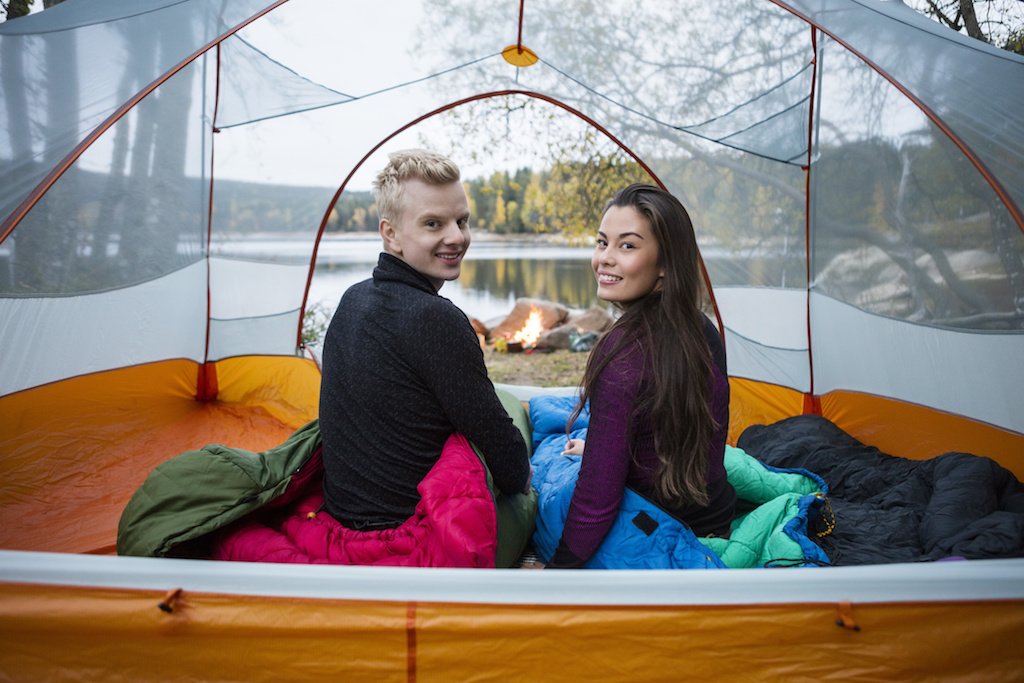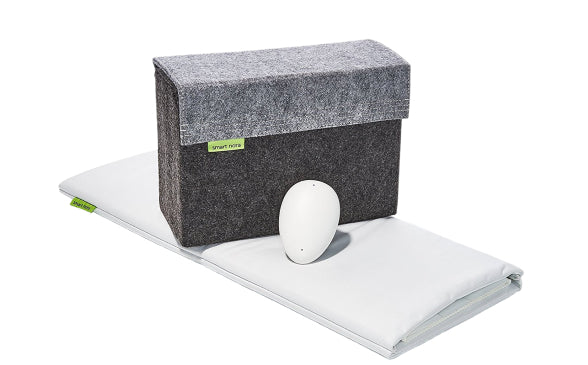
Categories
The Best Sleeping Bag 2021: Buyer’s Guide

For outdoor enthusiasts, sleeping bags are a very important equipment in your camping gear. It is your right-hand man in the dark and cold nights. They come in a myriad of colors, weights, functions, and prices. Some sleeping bags are lightweight and provide cover in warmer climates, while others are insulated for extremely cold conditions. Prices can vary between $25 upwards to $500, and some can go into the thousands.
How to choose the best sleeping bag that suits oneself? It is a headache problem for a lot of people. Knowing your needs before heading out to purchase a sleeping bag is crucial. Are you an avid deep wilderness backpacker? Do you enjoy pitching a tent in the backyard for the kids? Do you need a backpacking sleeping bag or a double sleeping bag? Different situations require different sleeping bag qualities. Don't worry, let's take a look at what options are out there today and evaluate what your needs are. This article basically answers most of your questions about the classification and selection of sleeping bags.
What are Sleeping Bags Made of?
Sleeping bags come in a variety of materials, fillers, sizes, weight, and packability. When shopping for a sleeping bag, one of the main things to look at is the filling. What is inside the sleeping bag will determine the warmth, price, and also the packability of the bag.
Down Filled: Down filled sleeping bags are typically recommended because of their insulation properties and low weight. The filling provides a cover to keep the user warm but can also keep from getting over-heated in the warmer climates.
Down also compresses very well which means that the sleeping bag will be quite compact when packed. This makes storing and carrying your bag easier.
Down filled sleeping bags are usually more expensive than synthetic filled ones and can lose some of their insulation properties when wet.
Synthetic Filled: Synthetic filled sleeping bags tend to be cheaper and are usually less packable. They will provide the needed warmth on cold nights and sometimes even retain heat better than down filled sleeping bags because they perform better when wet.
The synthetic material is not as compressible as down making the sleeping bag bulkier to carry. Synthetic filled sleeping bags are easier to care for and will dry faster than the down-filled ones.
Shell: Sleeping bags are typically made using nylon, polyester, or taffeta. Many companies reinforce the fabrics with water-repellant properties and thicker threads.
Another note is to remember looking for the FP (fill power) on your sleeping bag. The lower the FP, the heavier the bag will be. The FP numbers usually range between 500 to 900.
There are many debates on which filling is better, down or synthetic. What it really comes down to is what you need the sleeping bag for. If the price is a big issue, then the synthetic filled sleeping bag may be for you. If you are a mountain backpacker and weight/size is an issue, the down filled sleeping bag is probably best suited for you.
Types of Sleeping Bags
A few types exist in the sleeping bag world. Rectangular, double, mummy, and some are even targeted specifically for women.
Rectangular Sleeping Bag: This is the most common sleeping bag. It’s comfortable as there is a large room for the foot to move around. However, the area under the shoulder is pretty loose, which is relatively unable to effectively prevent heat loss. It is usually heavier and bulkier than other sleeping bags. The rectangular sleeping bag can be unzipped to be used as a blanket or connected with another piece, providing parent-child or two-person use.
Double Sleeping Bag: If sleeping with your partner is important, then the double sleeping bag will probably be what you need. And of course, there is no better way than keeping warm by sharing the heat from the partner. It is the heaviest sleeping bag among all of them.
Mummy Sleeping Bag: It fits the shape of the human body and usually comes with a semi-sculpted hood tightens with a drawstring to seal in heat. The feet part is designed as a three-dimensional thickening, making the whole body more comfortable and warm. Overall, it tends to be more technical and has better warmth retention.
Women’s: Some companies manufacture sleeping bags that are shaped and sized for women.
What to Look for in a Sleeping Bag
Your particular needs will determine what you have to look for in a sleeping bag.
Weight: Weight is a big factor to consider if you are a backpacker and need to carry other camping gear in your pack.
Warmth: Your body creates the warmth inside the sleeping bag, not the bag itself. The sleeping bag traps the heat inside to keep you warm. The type of insulation and the size of the bag will be the main factors for warmth retention.
Where and in what conditions will you be using the sleeping bag? This will determine how warm your bag needs to be.
Temperature/EN Rating: Most sleeping bags come with a temperature rating that will help you decide which one you need. It may be specified in “lower limit” and “comfort rating”. The lower limit will keep you alive, but not warm. It’s best to base your decision on the comfort rating.
The EN rating (European Norm) is a standardized rating system for sleeping bags that is consistent in the industry. It is usually more trustworthy but not all manufacturers provide this rating on their bags.
Selecting the right bag temperature can be confusing. Many factors come into account when it comes to sleeping temperature. Some people get chilly when sleeping, and factors like what you are wearing in the sleeping bag must be taken into consideration.
If you don’t know what sleeping bag to choose, look for the seasons listed on the sleeping bag. 1-season to 4-season are the guidelines and this will give you a good idea of how the bag is insulated and how warm it will keep you.
Length/Size: Sleeping bags come in various lengths and widths. It’s important to choose the bag that is the closest to your height and size. If the bag is too big, precious heat may be lost during the night.
Zipper: Zippers come in different lengths; full length or ¾ length is the most common. The full-length zipper will allow you to open the bag and create a more flexible bedding option. The ¾ zipper will create less weight for the bag.
Fabric: The waterproof fabric of a sleeping bag has a direct impact on its insulation performance. Currently, the best sleeping bags are made of water-resistant fabric.
Packing Size: Look for the packability factor if you will be backpacking or need a compact sleeping bag for traveling.
Price: Prices vary depending on the insulation and other technical properties. Paying less may not be a good option for you if you need a durable and warm sleeping bag.
Best Sleeping Bags
Best Affordable Sleeping Bags
If the price is an issue, you still have a few great options to consider.
Coleman Palmetto Cool Weather Adult Sleeping Bag

This sleeping bag is obviously not created for extremely cold weather conditions but is comfortable and keeps you warm throughout the night.
Features:
- Temperatures 20F-40F.
- 100% polyester
- Synthetic filler
- Weight: 5.56 pounds
“Performs much better than expected. And the liner isn't all that bad either” - Gabriel's Dad
WINNER OUTFITTERS Mummy Sleeping Bag

This bag comes with a useful compression pack that makes it easy to pack and carry.
Features:
- Temperature: 35F - 40F
- 100% Polyester
- 3-4 season
- 87 x 33
- Weight: 3 lbs
“Great for kayak and canoe trips.” - Rachel
Best Double Sleeping Bag
TETON Sports Mammoth Queen-Size Double Sleeping
This double sleeping bag will let you sleep with your partner or your kids very comfortably.
Features:
- Temperature: 0F
- Synthetic filler
- 94 x 62
- 16.53 pounds
“Great for couples, minimal layering needed, fantastic versatility!” - vg
Best Backpacking Sleeping Bags
These are a few of the best backpacking sleeping bags that have been tested and reviewed by expert backpackers. Of course, these will set you back a few more bucks, but they are high-quality backpacking sleeping bags that are meant to keep you warm and dry.
Western Mountaineering MegaLite
This is a super light sleeping bag that has great fill power.
Features:
- Material: ExtremeLite
- Size: short, regular, and long
- Insulation: 850+ fill down
- Shape: mummy
- Weight: 1 pound
“Great bag and very lightweight. It’s expensive but you get what you pay for.” - Matt Hopkins
Marmot Lithium 0F Degree Down Sleeping Bag

Features:
- Size: Regular, long
- Weight: 2 pounds
- Temperature: 0F
- Mummy-style
- 850+ fill power goose down with nylon shell
“Finally warm while camping.” - Lori
Maintenance of Sleeping Bags
Proper care of your down sleeping bag is essential for keeping it fluffy and warm and extending its life. Keeping it dry is the first priority: put it in its own storage bag in a dry and ventilated place and avoid compression. Use a neutral detergent when cleaning is necessary. It is best to use special detergent just for down products.
Synthetic bags require little maintenance since they are not afraid of moisture and are not as fragile as down bags. They also withstand washing and can be dry easily. Synthetic materials age more easily, and the more often they are compressed and fluffed, the faster they lose their warmth.
Therefore, down bags are worth buying because they are more compressible and remain fluffy after years of use.
The Takeaway
Having a good night’s sleep isn’t an option, even when sleeping outdoors. Equip yourself with the best possible sleeping bag so that you are comfortable and don’t spend the night shivering and wishing for the sun to come up.
Before shopping for a sleeping bag, ask yourself a few questions:
what's the weather for my trip? What about the camping environment? What season will I travel in? What is the minimum ambient temperature at which I participate? Do I care about weight? How much am I going to spend?
If you are not strong enough to withstand the cold, it is recommended that you choose a lower temperature sleeping bag. After all, it is much easier and safer to deal with warm heat than cold. There are many types of sleeping bags, but just like any other outdoor equipment, the most expensive ones may not the best. Only those that meet your needs and match your outdoor activities are the best choices.

